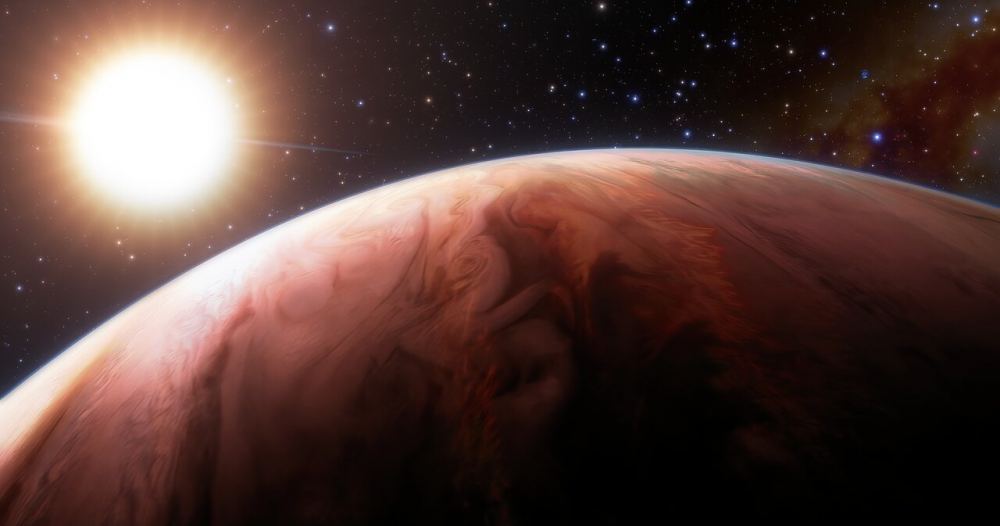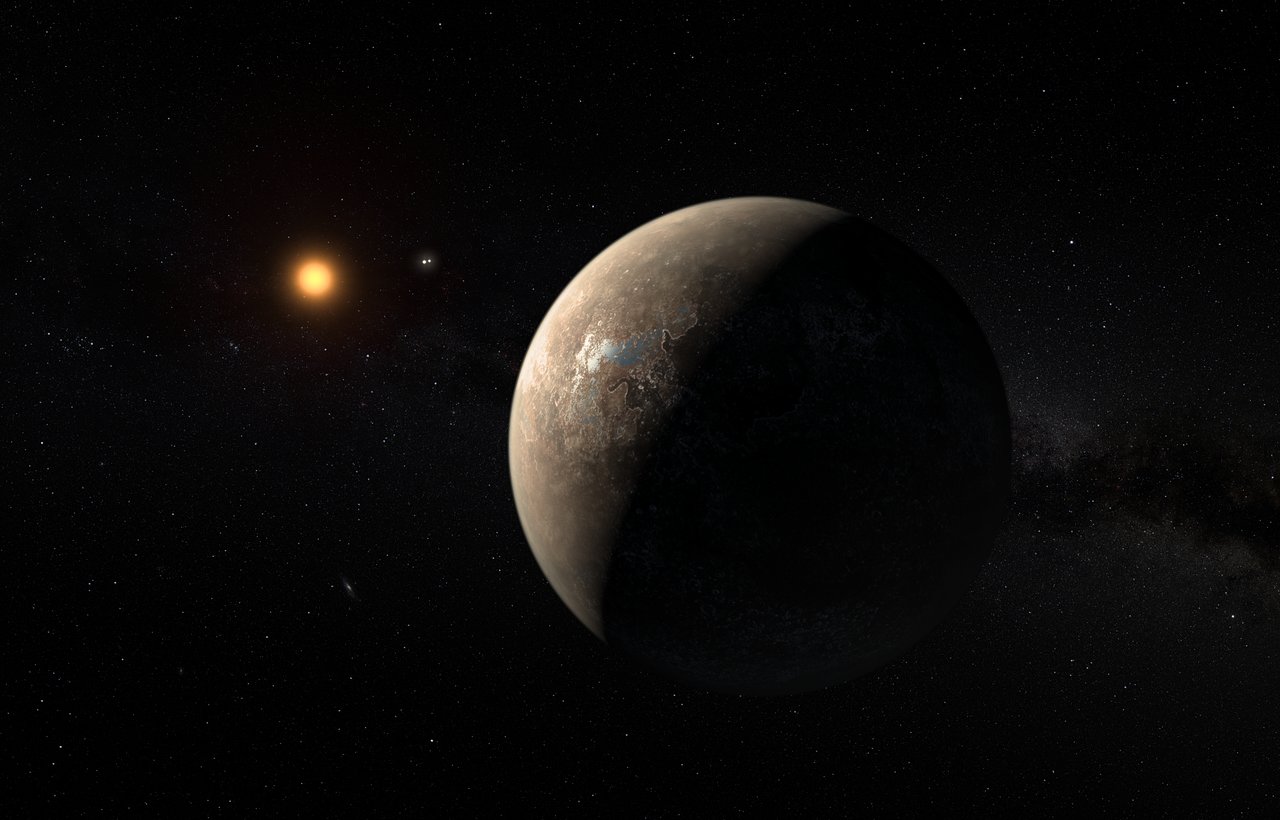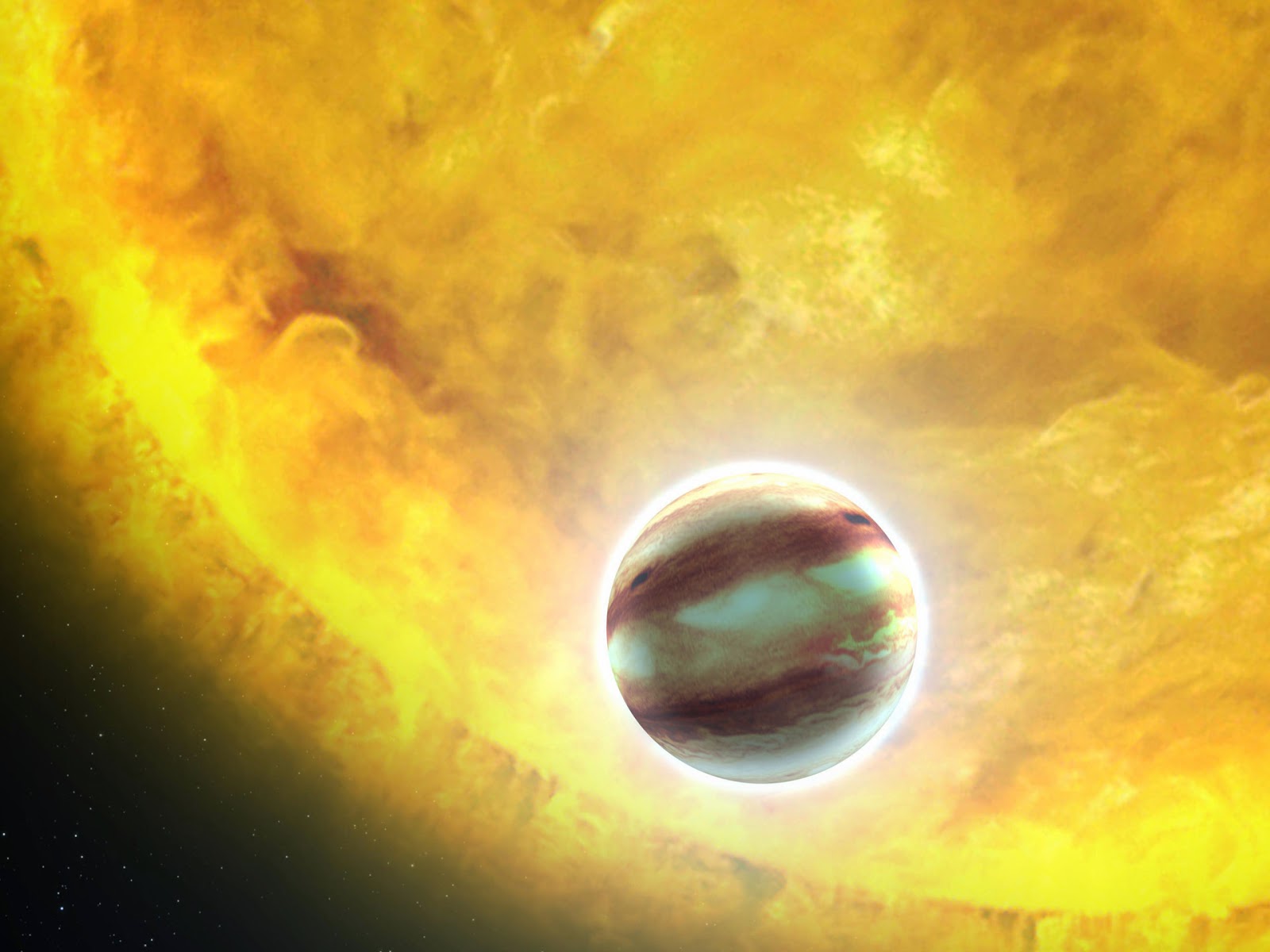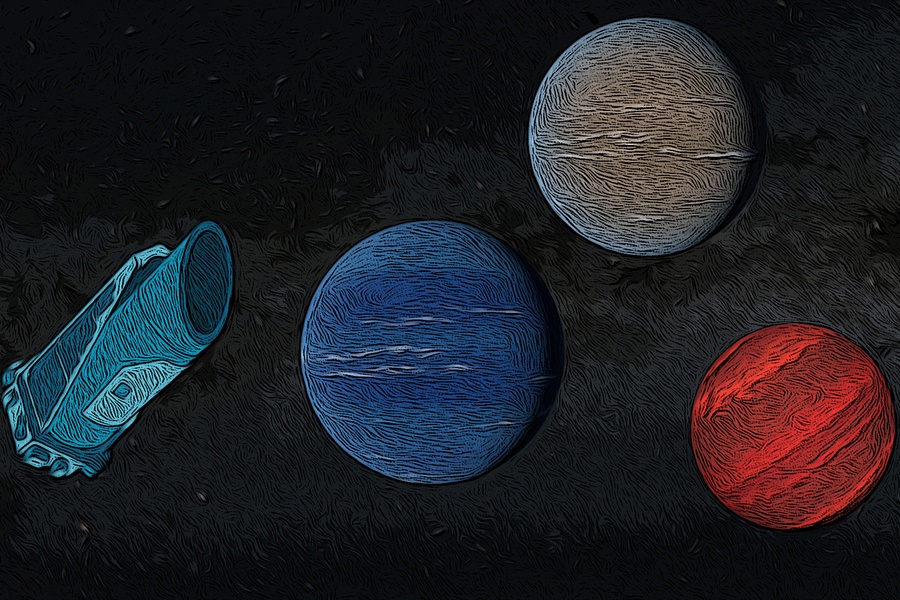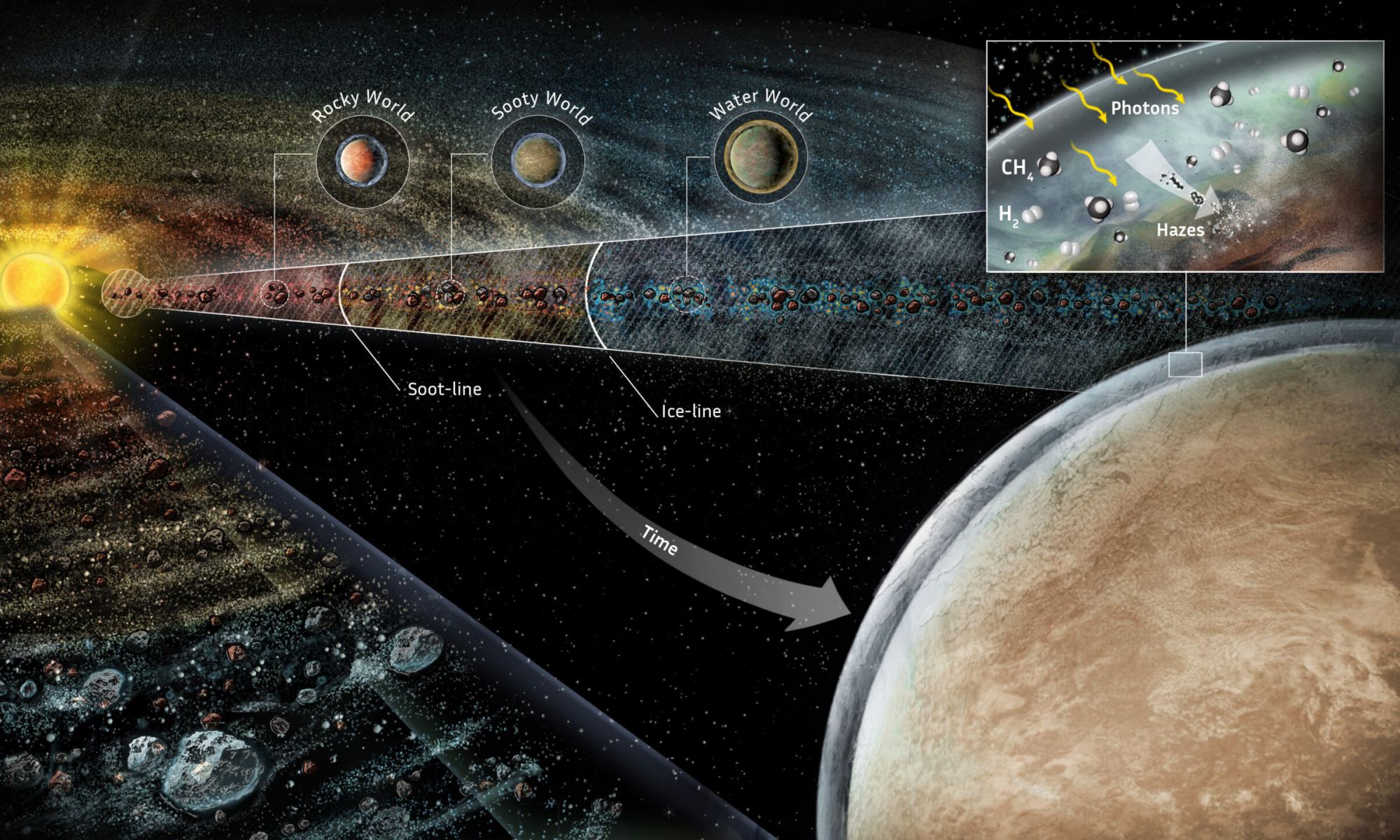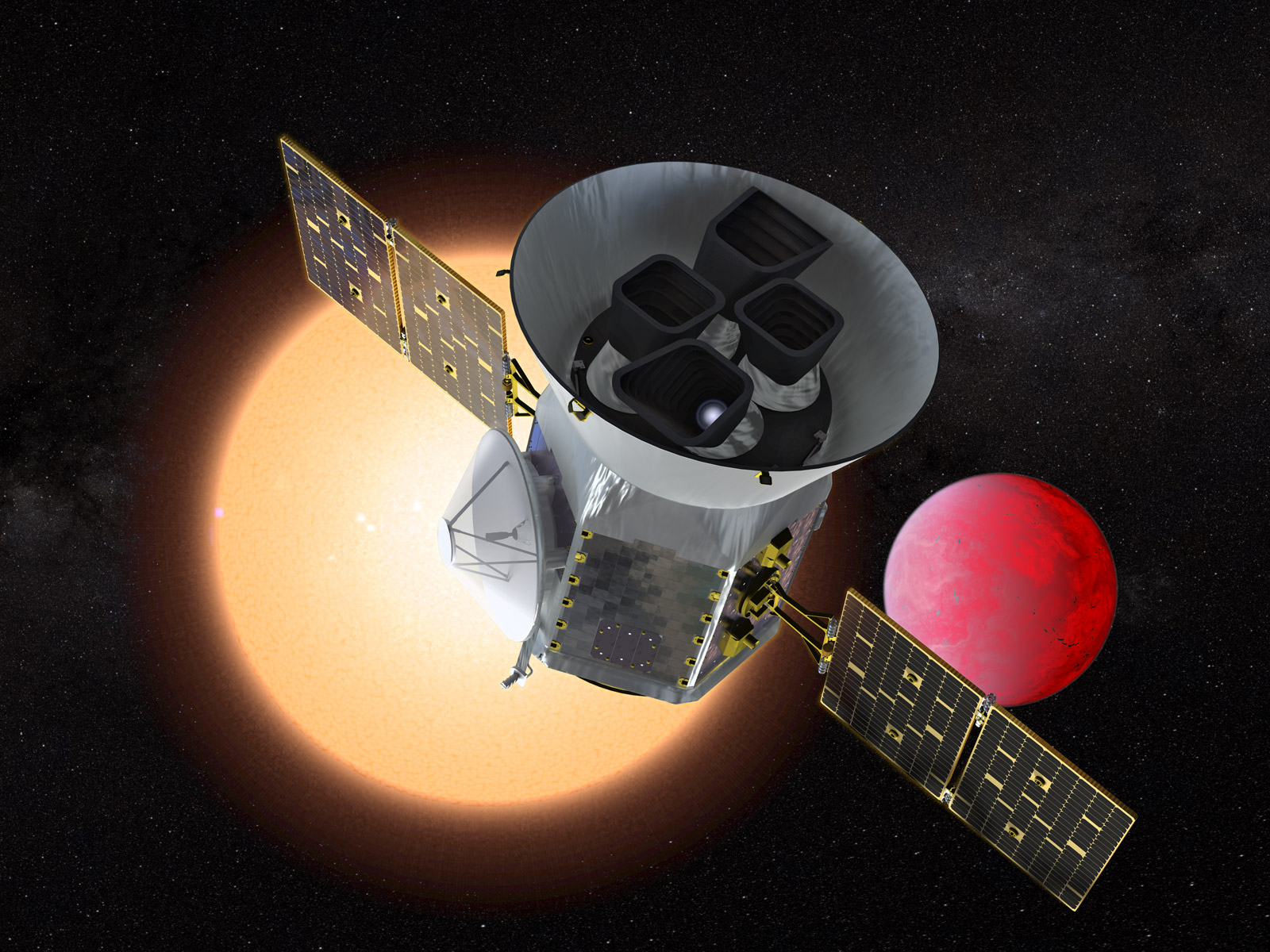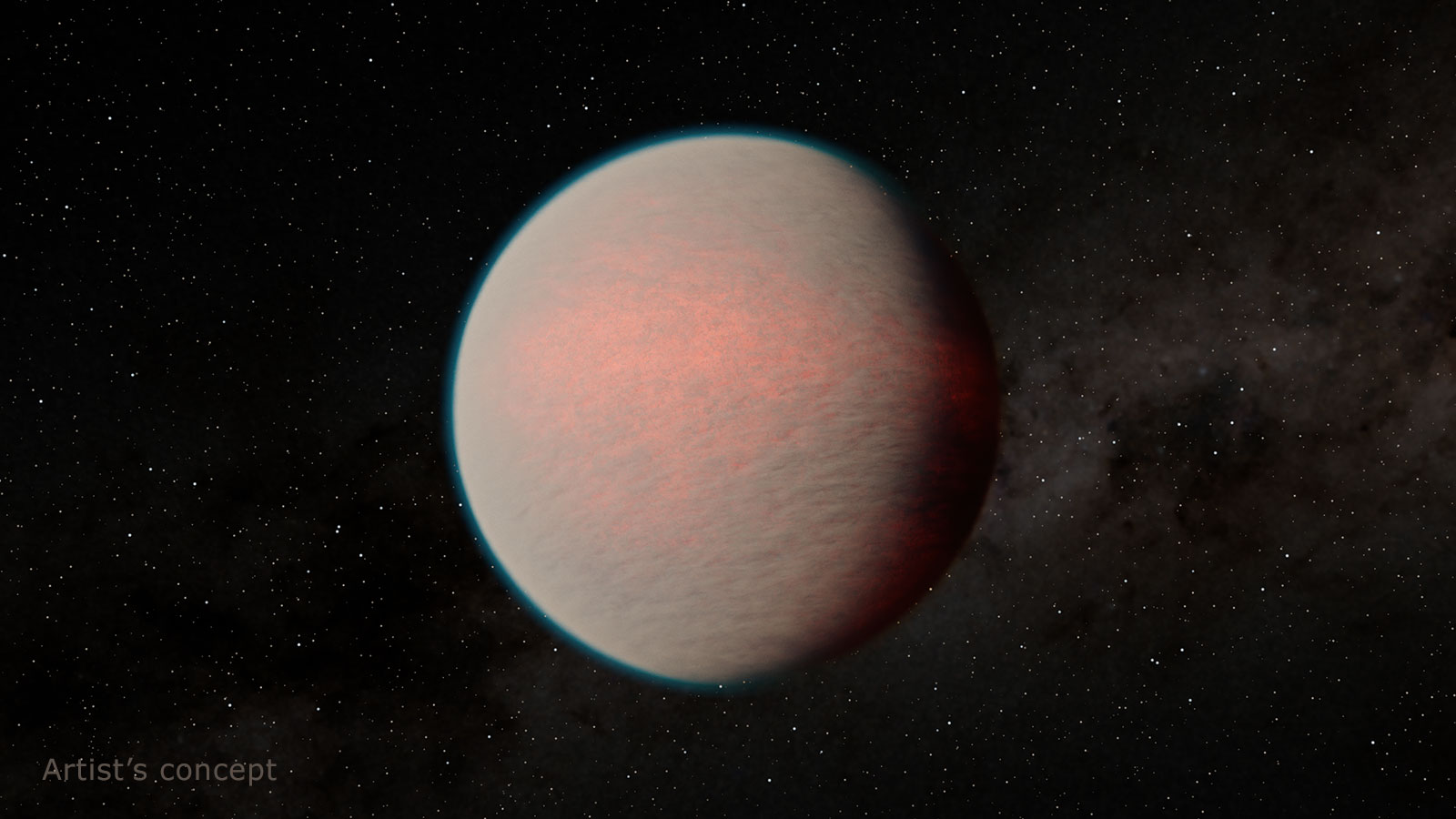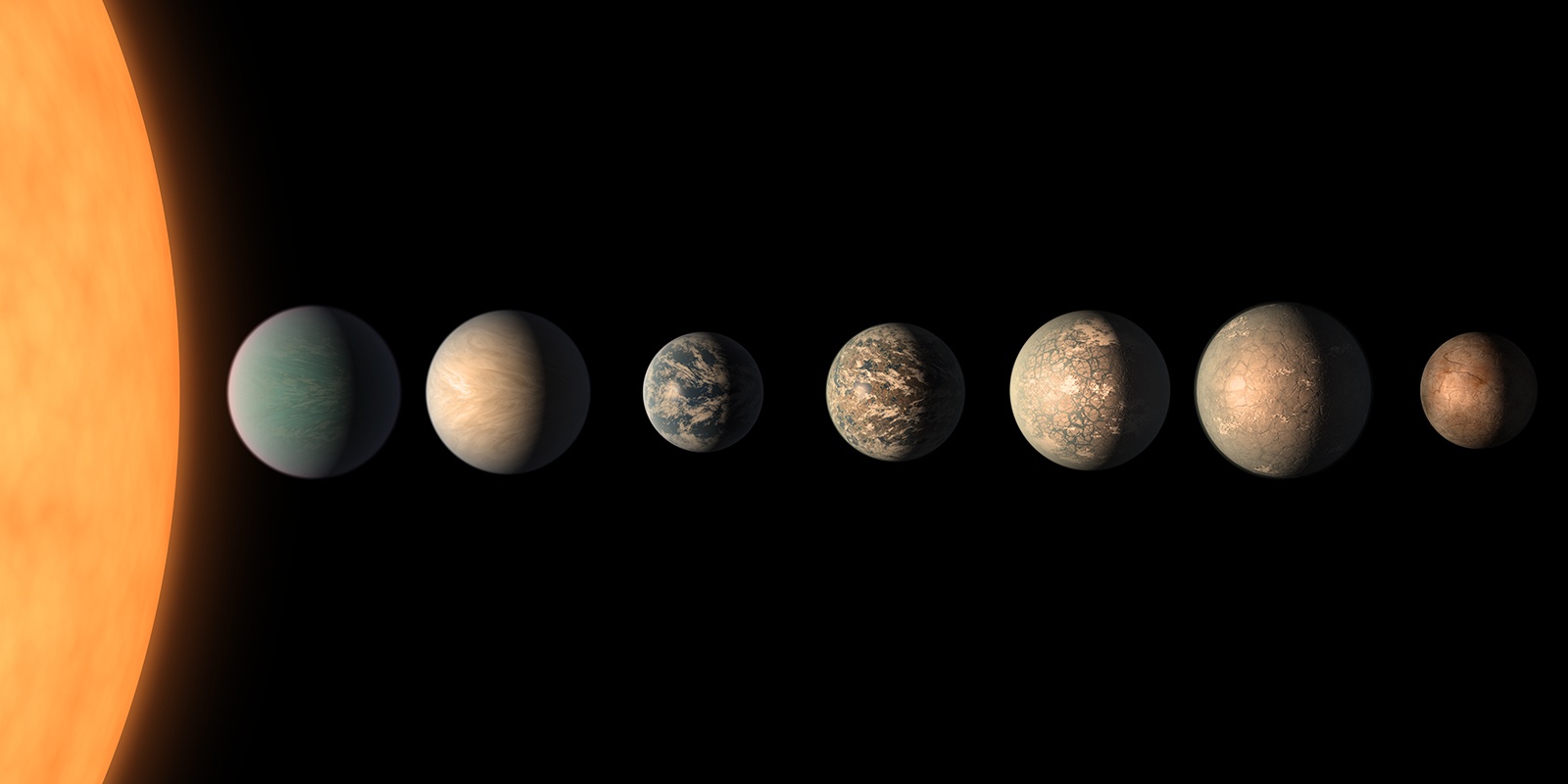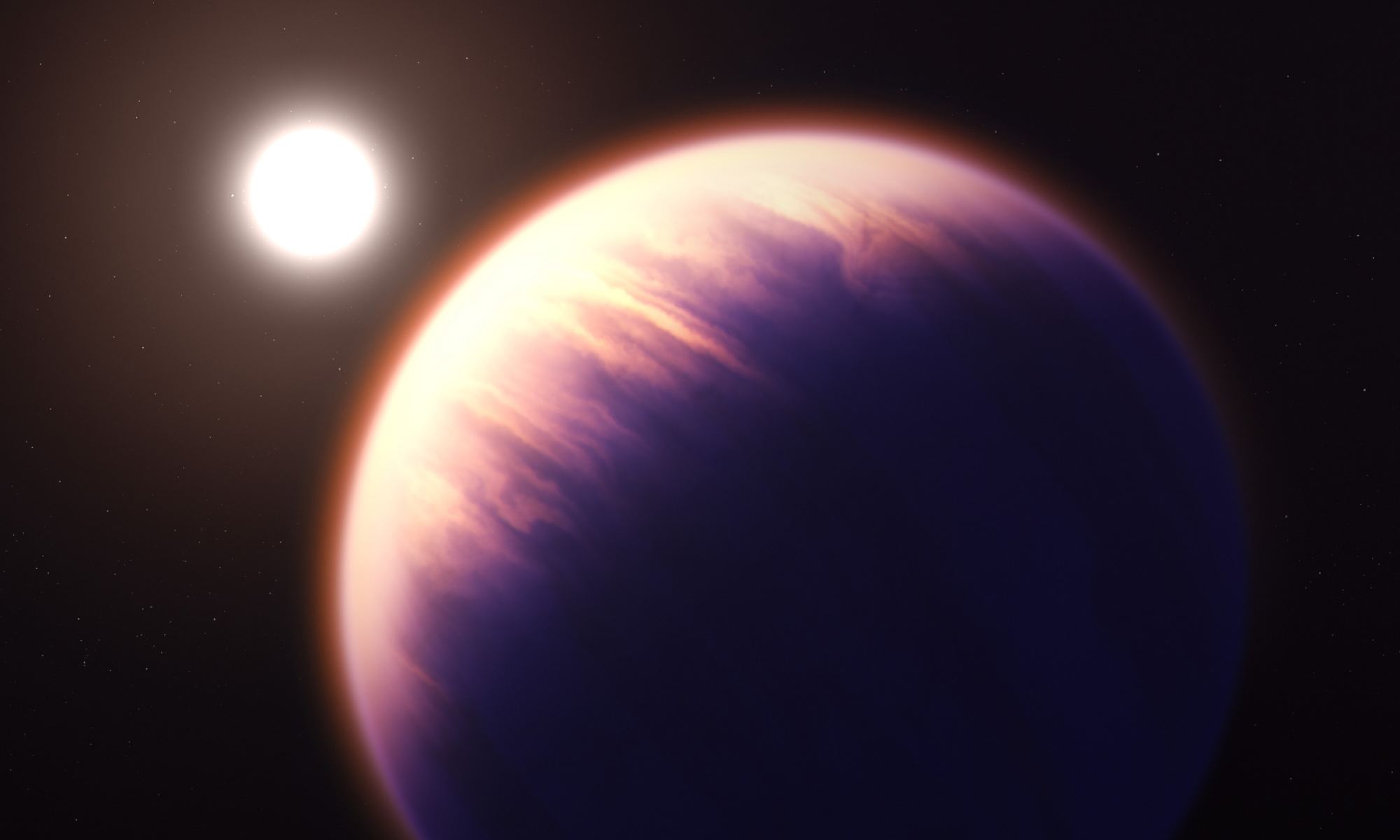In the annals of “strange new worlds”, the ultra-hot Jupiter planet WASP-76b ranks right up there as a very unusual place. There’s no surface, but it does have a massive, hot atmosphere. Temperatures average a raging 2000 C and rise up to 2400 C in one hemisphere. That’s hot enough for mineral and rock-forming elements like calcium, nickel, and magnesium to get vaporized and float around in that thick blanket of air. Not only that, but iron probably rains down through the clouds.
Continue reading “A Planet So Hot Its Atmosphere Contains the Raw Material for Rocks”A Planet So Hot Its Atmosphere Contains the Raw Material for Rocks
